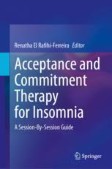Search
Search Results
-
Behavioral Phenotypes and Comorbidity in 3q29 Deletion Syndrome: Results from the 3q29 Registry
3q29 deletion syndrome (3q29del) is associated with a significantly increased risk for neurodevelopmental and neuropsychiatric disorders. However,...

-
Heritable Composite Phenotypes Defined by Combinations of Conduct Problem, Depression, and Temperament Features: Contributions to risk for Alcohol Problems
The genetic architectures underlying symptoms of conduct problems and depression have largely been examined separately and without incorporating...

-
Genes associated with depression and coronary artery disease are enriched for cardiomyopathy and inflammatory phenotypes
Depression and coronary artery disease (CAD) are highly comorbid conditions. Approximately 40% of individuals who have one diagnosis will also...

-
A Twin Study of the Relationships between Cognitive Disengagement Syndrome and Anxiety Phenotypes in Childhood and Adolescence
Data on the etiological factors underlying the co-occurrence of Cognitive Disengagement Syndrome (CDS) with anxiety symptoms are very limited. The...

-
Person-centred Approaches to Psychopathology in the ABCD Study: Phenotypes and Neurocognitive Correlates
Issues with classifying psychopathology using narrow diagnostic categories have prompted calls for the use of dimensional approaches. Yet questions...

-
Characterizing Sensory Phenotypes of Subgroups with a Known Genetic Etiology Pertaining to Diagnoses of Autism Spectrum Disorder and Intellectual Disability
We aimed to identify unique constellations of sensory phenotypes for genetic etiologies associated with diagnoses of autism spectrum disorder (ASD)...

-
Genetic and Environmental Variation in Continuous Phenotypes in the ABCD Study®
Twin studies yield valuable insights into the sources of variation, covariation and causation in human traits. The ABCD Study® (abcdstudy.org) was...

-
Clinical Staging of Schizotypal Disorder: Preliminary Considerations and Treatment Implications
Schizotypy has been approached in various ways – as a dimension of personality, a personality disorder, and as a disorder within the schizophrenia...
-
Depression and Personality Dysfunction: Moving from Descriptive Comorbidity to the Identification of Common Intermediate Phenotypes
This chapter presents an outline of relevant research on the interaction between depression and personality dysfunction. It starts with a discussion...
-
A Dimensional and Dynamic Approach to the Neurobiology of Mood Disorders: On Intermediate Phenotypes and Their Interaction with Early Stress
The neurobiological theories of depression find their main pitfall when searching associations between specific pathophysiological mechanisms and a...
-
Integrating neuropsychological research on autism and psychosis to improve clinical outcomes
Although the clinical phenotypes of autism and schizophrenia spectrum disorders are considered distinct, there are substantial areas of overlap...

-
Insomnia
Insomnia is the most common sleep complaint in the general population. The condition can manifest itself in several ways and can be triggered in...
-
NIMH’s Research Domain Criteria (RDoC) and Clinical Child Psychology
The Research Domain Criteria (RDoC) is a research framework introduced by the National Institute of Mental Health (NIMH) in 2009 intended to direct...
-
Multidimensional Emotional Disorder Inventory: reliability and validity in a Colombian non-clinical sample
BackgroundContemporary diagnostic frameworks in the realm of mental health have garnered criticism due to their categorical paradigm. Given the...
-
Adolescent Nonsuicidal Self-Injury and Suicidality: A Latent Class Analysis and Associations with Clinical Characteristics in an At-Risk Cohort
Nonsuicidal self-injury (NSSI) is frequently encountered in adolescents, but its predictive value for suicidality or other clinical characteristics...
-
Neuropharmacology of Aggression in Model Systems: The Zebrafish as a New Narrative
Zebrafish (Danio rerio) are rapidly becoming a powerful new model organism for neurobehavioral and neuropharmacological research, including...
-
Neurophysiological Correlates of Sensory-Based Phenotypes in ASD
Children with autism spectrum disorder frequently present with atypical behavioral responses to sensory stimuli, as well as differences in autonomic...
-
Neuropharmacology of Aggression in Model Systems: The Zebrafish as a New Narrative
Zebrafish (Danio rerio) are rapidly becoming a powerful new model organism for neurobehavioral and neuropharmacological research, including...
-
The Intergenerational Transmission of Developmental Nicotine Exposure-Induced Neurodevelopmental Disorder-Like Phenotypes is Modulated by the Chrna5 D397N Polymorphism in Adolescent Mice
Maternal tobacco smoking during pregnancy constitutes developmental nicotine exposure (DNE) and is associated with nicotine dependence and...

-
Sensory Phenotypes in Autism: Making a Case for the Inclusion of Sensory Integration Functions
Sensory features are part of the diagnostic criteria for autism and include sensory hypo/hyper reactivity and unusual sensory interest; however,...

